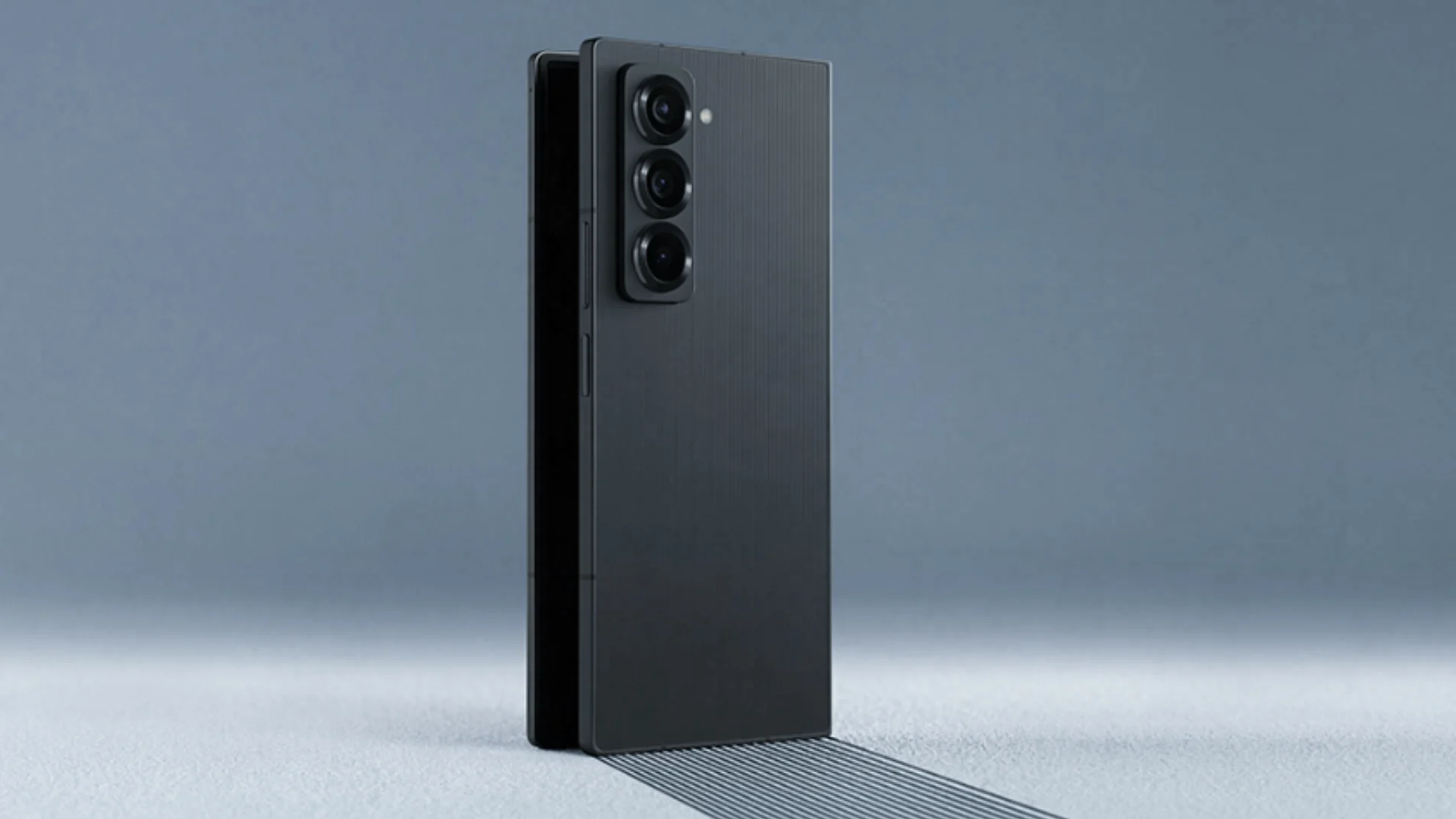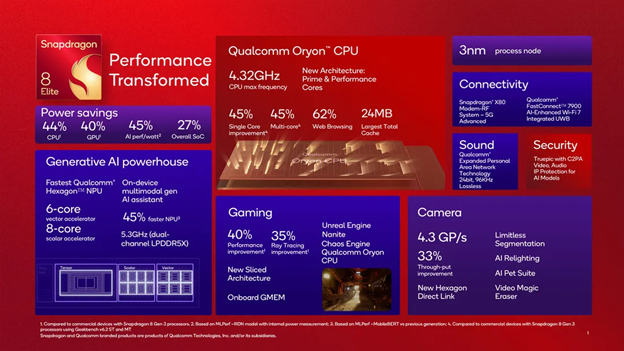
With the official release of the Galaxy Z Fold Special Edition, which costs more than its bulkier Z Fold 6 counterpart, Samsung has finally shown their long-awaited stab at a slimmer folding phone.
The Galaxy Z Fold Special Edition, which appears to be a limited edition, has been listed on Samsung’s Korean website as a “thank you note for customers who love Galaxy Foldable,” along with specifications and a price list.
The size and specifications of the Galaxy Z Fold Special Edition has Z Fold SE’s main selling feature is its extreme thinness, measuring only 10.6 mm when closed and 4.9 mm when opened. Naturally, that is narrow by Samsung’s Z Fold line standards, as many Chinese book-style foldables are currently falling below the 10mm threshold.
The Z Fold Special Edition weighs a respectable 236g and measures 157.9 x 142.6 x 4.9mm when open and 157.9 x 72.8 x 10.6 when closed. It is not large by any means, but it does not have the same beauty as, for example, the Honor Magic V3 folding.
Samsung is introducing the Victus 2 as its third foldable phone of the year because it has made it more durable with an Armor Aluminum frame, water resistance, and Gorilla Glass.
Unfortunately, as previously anticipated, Samsung has decided against supporting the S Pen pen on the Z Fold SE in order to achieve that more attractive design, since doing so would have introduced an additional layer of digitizer thickness.
Additionally, it appears that the Z Fold Special Edition is only offered in Black Shadow, which has a “straight-line pattern design” on the metallic-looking surface. However, the screen is not the same as the Z Fold 6’s.
Samsung’s biggest folding display to date, measuring 7.99 inches, is featured on the Galaxy Z Fold Special Edition. The screen has a dynamic refresh rate of 120 Hz, a peak brightness of 2,600 nits, and a resolution of 2184 x 1968 (QXGA+) pixels.
In contrast, the cover display is 6.5 inches with a resolution of 2520 x 1080 (FHD+) pixels. Samsung has not disclosed if it has a higher refresh rate, but we’d venture that it doesn’t because it isn’t marked as a 120 Hz panel.
In addition to its record-thin (for Samsung) girth, the Z Fold SE has an impressive array of specifications, this time in the area of the camera. Even if the Special Edition foldable is slimmer than the previous model, the 200 MP + 12 MP + 10 MP kit is superior than the Galaxy Z Fold 6 at least in terms of the primary sensor.
In contrast to Chinese or Google foldable phones that use periscope zoom lenses, the rear cameras have up to 30x digital zoom and 3x optical zoom or 2x optical zoom using an adaptive pixel sensor. Additionally, there is a 4MP under-display camera sensor at the top of the main display and a 10MP cover screen selfie camera.

Samsung has not disclosed the CPU that powers that device, but the Snapdragon 8 Gen 3 chipset, which powers the Z Fold 6 for Galaxy, has eight cores with clock speeds of 3.39GHz, 3.1GHz, 2.9GHz, and 2.2GHz for the peak or middle cores. With a stated battery capacity of 4,272 mAh, the Galaxy Z Fold Special Edition is once again less powerful than its Chinese competitors.
The Z Fold Special Edition costs an astounding $2020 in Korean won equivalent, which is around $500 more than the Galaxy Z Fold 6’s starting pricing in that country.
The similar Z Fold 6 with half a terabyte of memory costs almost $400 less, even if we take into consideration that the Samsung Galaxy Z Fold Special Edition has 16GB RAM and 512GB storage.
As a “thank you note” to its folding phone fans in Korea, Samsung has now made the Z Fold Special Edition available for presale and will be delivering it on Friday, October 25. Anyone interested?
Samsung Electronics Korea’s executive vice president, Sung-Taek Lim, expressed gratitude to the Korean customers who are spearheading the foldable market. We are happy to launch this innovative gadget in Korea. The Galaxy Z Fold Special Edition is a gadget that delivers a tiny and light folding experience. It has a smart design, rich colours, and detailed patterns.
The 8 Elite is Qualcomm’s newest mobile chip

The best Android phones of the upcoming year should be able to play games for longer periods of time and feature even better AI and low-light photography performance. Qualcomm unveiled the Snapdragon 8 Elite, the next generation of CPUs that will power the top phones from Samsung, Motorola, OnePlus, and other makers, during its Snapdragon Summit in Hawaii.
The Snapdragon laptop processors are the source of the “elite” moniker for the company’s smartphone SoC.
Qualcomm changed its naming rules for mobile chipsets just a few years ago, and now it’s doing it again. The company’s next high-end smartphone SoC, the Snapdragon 8 Elite, has a new Oryon CPU, just like the laptop chips from which it gets its name. According to the business, this change allows for speedier performance and provides on-device support for multimodal intelligence, not to mention artificial intelligence.
The 8 Elite’s Oryon CPU, which Qualcomm refers to as a second-generation chipset, was not directly lifted from the laptop chips. It contains two prime cores and six performance cores, replacing the Kryo CPUs Qualcomm employed in earlier mobile chipsets. The Adreno GPU has a novel sliced architecture with RAM allotted to each slice, and there is an X80 5G modem-RF chip.
When I asked Chris Patrick, SVP of Qualcomm’s mobile handset division, what he thought all that improved technology would mean for smartphone consumers, he basically said that it would mean more desktop-like performance from a phone. Heavy games will run more smoothly on mobile devices, while poorly designed websites will “run very quickly and feel light.” “Just like we’re kind of used to on desktop experiences, your chipset kind of fades into the background and you just do whatever you want to do.”
More generative AI capabilities, which became the showpiece feature that tech firms rushed to include into their products this year, would be made possible by the new processor. With the January release of the Samsung Galaxy S24, which was equipped with generative AI, the smartphone market began its own competitive race toward this technology. Meanwhile, the iPhone 16 series is expected to receive some Apple Intelligence in a future update. Although still in its infancy and has only a few noteworthy capabilities at this time, Qualcomm’s next processor is expected to enable further functions that will increase the allure of purchasing phones with Snapdragon 8 Elite.
Additionally, the 8 Elite has some NPU enhancements, in case you forgot that 2024 is the year of AI phones. On-device multimodal AI assistants that can process both text and visual input are supported by the updated Hexagon NPU. In order to eliminate distractions from video footage, there is also support for an AI-powered video object eraser tool on the device, which seems very crazy and challenging to implement well. The effectiveness of this tool won’t be known until an OEM incorporates it into a phone, but I predict Samsung will include it as a feature in the Galaxy S25.
We probably won’t have to wait that long to get a decent look at the new processor, but if Samsung releases a phone with the Snapdragon 8 Elite, we probably won’t see it until early next year. Asus, Honor, OnePlus, Oppo, and Xiaomi are among the companies whose first eight Elite products are anticipated to be on sale “in the coming weeks.”
The Snapdragon 8 Gen 3 CPU from last year, which was the company’s first semiconductor with generative AI capabilities, serves as the basis for the Snapdragon 8 Elite. More AI capabilities are included in the new chip, including the ability for an AI assistant to utilize the camera to identify items in real time and a new trick that creates illumination so that your artificially well-lit face appears in bright backdrop films. That’s in addition to features that were available on the previous-generation chip, like image generation through Stable Diffusion and expanding photos beyond their original boundaries.
Qualcomm says that the chip’s enhanced neural processing unit, which has more cores, can execute AI up to 45% quicker and with higher battery efficiency. In order to respond to inquiries, the NPU now incorporates multimodal generative AI applications within the device, which means it can process inputs from many sensors and data sources (audio, video, personal information, and more).
The 8 Elite can process over 70 tokens per second, which is a measure of how many inputs (text, images, etc.) can be taken into account when responding to queries.
Qualcomm claims that the Snapdragon 8 Elite deviates from its naming tradition to indicate that it is the best of the best, in contrast to the prior three years’ top-tier Snapdragon processors, which were referred to as Snapdragon Gen 1, Gen 2, and Gen 3. This is due to the fact that the 8 Elite is the first of the company’s mobile processors to utilize the Oryon CPU, which was created by Qualcomm. In other words, a year ago, the business unveiled its Snapdragon X Elite PC chips, which were the first to use Oryon CPUs.
The 8 Elite’s 45% higher efficiency is made possible by its usage of a second-generation Oryon CPU, which has a 3-nanometer process (smaller than the 4nm of last year’s Kryo CPU). The most intriguing effect is a 62% gain in web surfing speed, which means users should notice webpages and web-based apps load quicker. Chip architectural upgrades have resulted in a 45% improvement in overall performance.
Not only will webpages load more quickly as a result. Having a CPU built to speed up web browsing would improve the services that users use on a daily basis because many current apps and software depend on it.
High-intensity activities like gaming benefit from this increased efficiency, and Qualcomm claims that their new technology allows for up to 2.5 hours of more gameplay.
A new ISP with improved AI touches on focusing, white balance, and exposure is the primary way that the Snapdragon 8 Elite enhances camera performance. These improvements take place in the background and should provide better images. For real-time improvements, including video, the NPU may now directly access the camera sensors. Phone manufacturers can use this pipeline to directly input their camera algorithms.
AI, you guessed it, is primarily responsible for the networking enhancements made to the 8 Elite. The FastConnect 7900 combines Wi-Fi and Bluetooth to lower latency, while the X80 5G Modem uses AI on multiantenna management to better balance signals for crisper connections. This enables calls that are out of Bluetooth range to transfer the connection to Wi-Fi in order to continue.
We won’t know how much of a difference the new chip makes until new phones featuring the Snapdragon 8 Elite are actually released. However, according to Qualcomm’s statements, the processor should provide the upcoming generation of Android phones with a combination of general and AI-powered enhancements.
Discover more from TechBooky
Subscribe to get the latest posts sent to your email.















